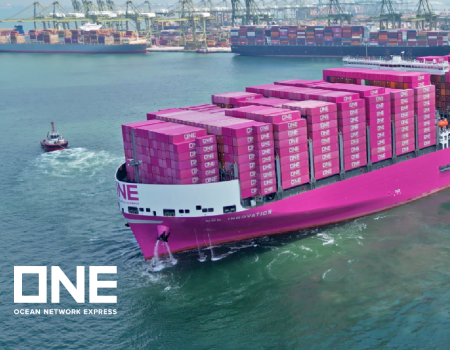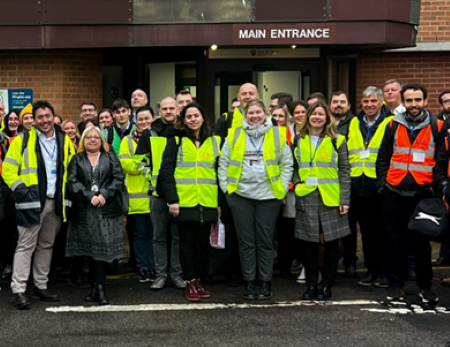Fashion retailers are facing a fierce battle to protect margins and corporate profits against the heavy costs of an explosion in returns. The larger retailers are putting in place systems that offer visibility and control over the returns process, creating a competitive edge in the market. But what can medium and smaller sized retailers do to leverage available technology and steal a march on the competition?
Returns in the fashion and garment sector are not exactly a new phenomenon. There has always been a small percentage of mail-order items that are discovered to be faulty, damaged in transit or defective. The wrong goods may have been despatched – it happens. Retailers have offered goods to selected customers ‘on approval’, and of course there are returns of gifts where the giver’s estimate of size or taste has proved over-optimistic. But historically, such returns have amounted to a very small percentage of sales: readily managed, or even ignored.
That is certainly no longer true in an omni-channel e-tailing age. A recent ‘Fashion Returns Review’ by the e-tail trade association IMRG suggested that the long-term average return rate for online fashion goods is 23%. For some lines and brands it can be very much higher – anecdotally, over 50% in some cases and still growing. In a 2014 research note, Gartner stated that for most retailers, returns represent the largest single ‘supplier’ to their business.
With returns now accounting for such a large proportion of goods sold online, and with internet sales still growing rapidly – the IMRG Capgemini e-Retail Sales Index reports online sales rising by 7% in January 2015 compared to the previous year – retailers are facing a tough challenge. How to manage returns in order to minimise costs, improve availability, reduce stock obsolescence and maximise margin?
It is easy to see how this ‘explosion’ in returns has come about. ‘On approval’ is no longer the privilege of the high-rolling, high credit few: it is a right claimed by every shopper with valid plastic. More seriously, in the online world, without a physical changing room, fit and colour become a matter of guesswork. Sizing issues can to some extent be addressed by technology, and also greater consistency and honesty by both vendor and shopper, but judging real-life colour from a VDU image will always be problematic. The result is that an online shopper may order three styles, each in three shades and three sizes – nine items of which eight will probably be returned.
A feature of the modern retail environment is that it is not just the initial sale that is multi- or omni-channel, so is the returns flow. Returns may be collected from the customer, posted or couriered back to a DC or a specialised returns reception point, or returned in-store. But that shop may well not be the branch that made the original sale. More likely the sale was on-line and never went near a physical shop. Some lines may only be sold on-line, so the shop may now hold goods that are not in its sales range. Even if they are, that store may have plenty of that line, while another branch is out. Returns at the end of a ‘season’, which may be almost monthly, may no longer feature in the retailer’s advertised range, effectively making the items obsolete.
So returned goods may face a variety of fates depending on condition, obviously, but also location and the costs of the processes involved relative to the goods’ residual value. Ideally, returns in pristine condition can be put straight back into stock where they lie, be that DC or shop. More likely, at least some remedial work will be required, especially on packaging. Quite possibly the need for stock is not where the item is lying, so it may need to be moved to the appropriate location.
It may not be possible to recover the goods as full-priced stock. There may be damage that renders the item a ‘second’. The item may be obsolete, no longer carried in the retailer’s range. It may conceivably have been a poor-selling line – the retailer may have racks full of the item and spending extra money to add to this immobile inventory may not make sense. Or the item may be stained, damaged or defective to an extent that it cannot plausibly be resold, at least not by the original vendor or under the original label.
With a quarter or more of ‘sales’ being, in fact, nothing of the kind, it is imperative that the retailer has timely and efficient processes for realising the maximum residual value of returned goods at the least additional cost. Some studies suggest that as few as 48% of returns are subsequently resold at the full original retail price – on average they suffer a 5-10% markdown. But that disguises much more drastic reductions on some lines, and these goods are now bearing their share of the costs incurred in the initial sale plus those incurred in the returns process.
There are choices to be made, and effectively every item requires an individual decision. Such decisions are complicated because while retailers may have an overall idea of the ‘cost of returns’, they may well have little visibility of cost at the individual item level. Retailers need to be able to decide whether it is worth spending what is necessary to offer the item in, for example, an end of season sale at a suitable discount.
The 2013 ‘Retailtopia’ report for BT cautioned that ‘Accountants tend to overvalue returns’ and that aggressive write-downs of at least 25% are appropriate, but clearly this will vary from case to case. Depending on company policies, not least on brand protection, returns may be offered through ‘outlet’ venues, or, suitably stripped of branding and at even greater discount, through market traders or even overseas markets. Charitable donation may be a disposal route. The BT report says that 85% of returns can avoid being sent to landfill, and it should be possible to improve that figure further.
The returns management process is thus influenced by many factors, from marketing strategy, brand image and customer service to the harder numbers of costs incurred and cash recovered. Other than keeping the customer happy, returns management has two principal functions – to act as a supplier (and potentially a very agile supplier) to the physical and online fulfilment processes, which is a very positive thing; and rather more negatively, to maximise cash recovery and minimise margin impact from what is, after all, a lost sale.
Optimising this complex situation requires well thought through and understood policies and procedures and acute, generally human, decision-making. It also requires IT systems at warehouse, shop and business levels that can identify, track and progress individual returns through the appropriate procedures and, ideally, back into saleable stock, giving visibility of the availability of returns in the overall stock picture. This should help inform decision-making around the alternative recovery routes and supporting financial operations, including, if necessary, customer refunds if these are not carried out at point of sale.
That is a complex set of tasks, but the last thing a mid-sized fashion retailer needs is another set of systems just for reverse logistics – with all the costs, integration issues, and burden on a small IT department. Therefore, the exacting requirements for reverse logistics and returns management need to be built in to retail shop and warehouse solutions from the start.
At one level the solutions should enable the effective management of returns in-store, providing visibility to the business that the return has been made and then managing the move back into stock, probably through the POS system. Or if the return is, directly or through the store, back to the DC, then the system must support the ability to identify the stock and its condition and manage the process for repackaging or other remedial work – ultimately it must manage return to stock in the appropriate location, with minimum re-handling, cost and time. At a more holistic level the system should offer the retailer a comprehensive view of stock that supports a Distributed Order Management model wherein items do not have to be managed through the supply chain but are treated as free available stock to meet online or store requirements.
As an example, at Zetes three of our solutions have a key role to play. Medea is our warehouse execution system optimising processes including returns and providing visibility. Athena operates similarly in the store environment, from order picking and managing click’n’collect to stock enquiries, inter-branch transfers, price markdowns, ticketing and the returns process and supplying visibility at store and company level. Olympus forms a high-level event repository for the comprehensive tracking and tracing of individual items. All can be deeply integrated with established WMS, merchandising, ERP, POS and other core systems.
The best approach is to start by doing a front end evaluation of existing systems and identify the optimum processes for handling returns, be they in store, at the DC, or both – taking into account the need to incorporate or replace legacy systems, including paper-based systems. Then integrate relevant Cloud-based solutions, data-capture technology and the rest, to the key elements of the supply chain – in-store, at back of store, in the DC, in the transport network – to provide the required efficiency and visibility.
Critically, it is important to break down the barriers between the ‘silos’ that often exist. For example, a DC may be running at an apparently high level of efficiency in meeting store and on-line demands, but that efficiency may be ‘bought’ by giving lower priority to the smaller volumes and more complex processes involved in returns handling, without regard to, or visibility of, the wider impact on the company and its customer base.
Traditionally, retail systems have treated stores as ‘black boxes’ – they know what has been received, what has been sold and what is available in stock and that is about it. But it is vital that management has more granular visibility by being able to identify stock aligned to specific business areas, for instance returned stock but also stock that is already allocated as part of a click’n’collect order and so is not available. Through this we can make visible the impacts on replenishment, availability, the validity of the ecommerce offer and the availability to fulfil from store.
In turn this enables management by location which is key in reverse logistics – this area is stock to be returned to the DC; this is goods awaiting Quality Control, these are goods to go to an outlet store, and these are for landfill. This level of granularity allows more effective store management, a greater visibility of the real stock position, improved accuracy, greater ability to fulfil orders, which in turn, leads to an improved customer offer with reduced stock levels. Or more simply, better margins and bigger profits.
Retailers, understandably, focus on the front end of sales and marketing to get the customers in. But there is no point in driving more customers to the website or the store if you have not got the supply chain fundamentals right, and that must include reverse logistics and returns management.
The battle to protect margin and remain competitive will increasingly be dependent on a retailer’s ability to master the returns process.







